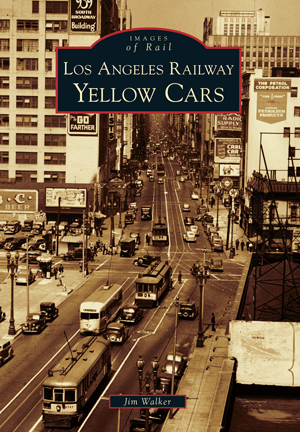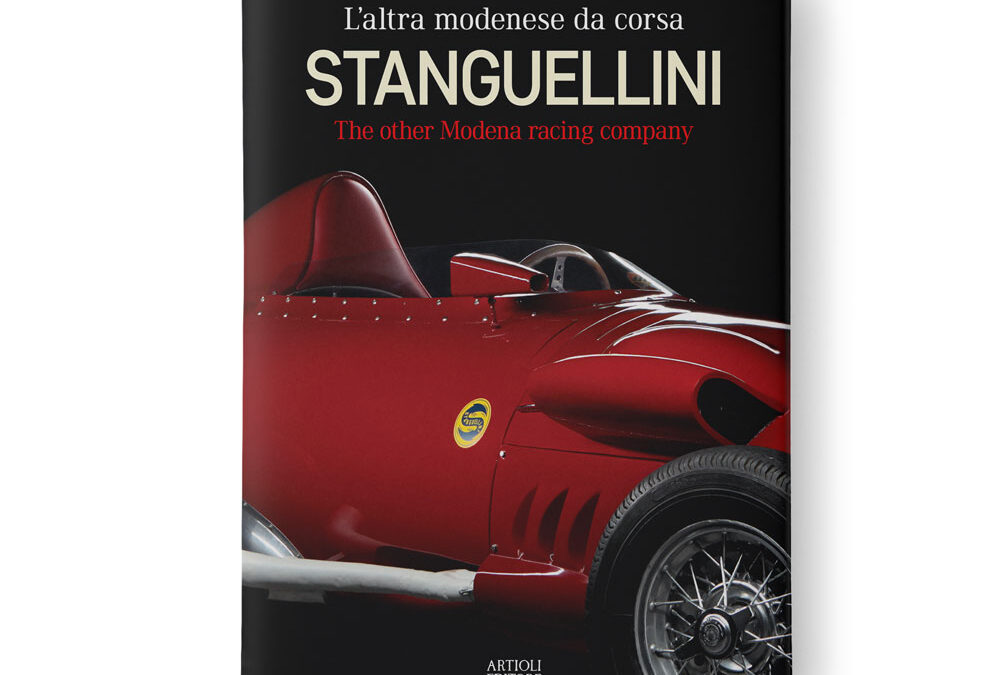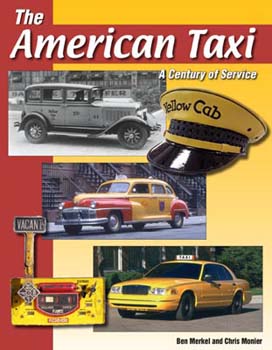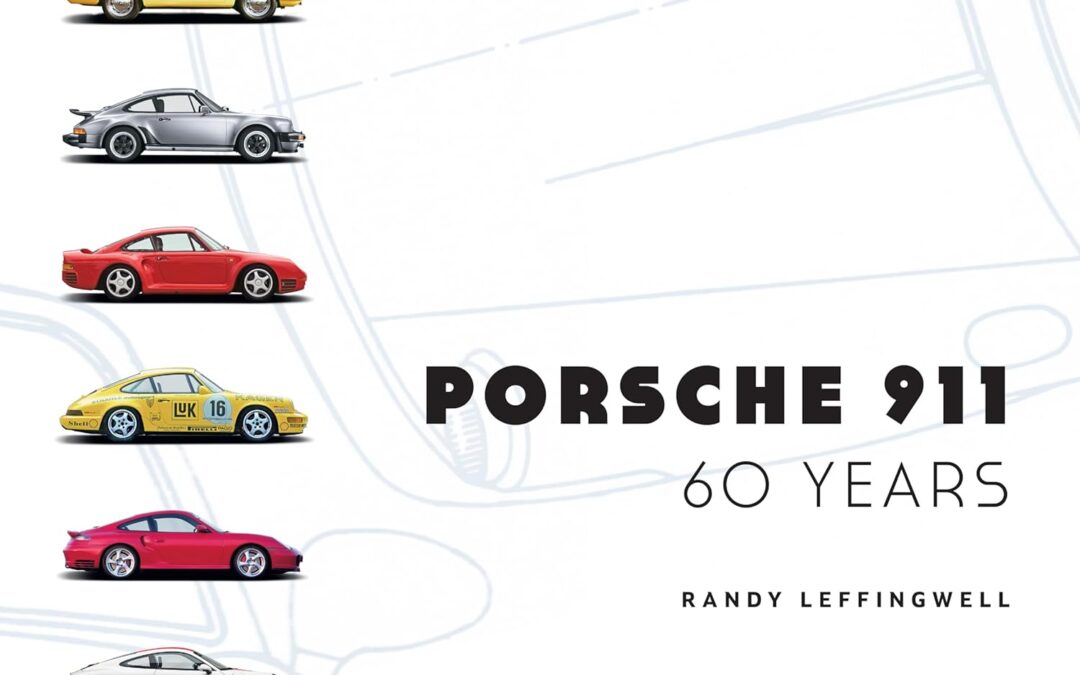
Local rail-borne transit in Los Angeles began with horsecars in 1874, evolving with cable-powered and later electric-powered passenger vehicles. “Yellow Cars” describes the principal local transit system in and around Los Angeles in the first half of the 20th century. The canary-colored local streetcars formed the inner-neighborhood lines between a vast rail network of main lines known as the “interurban” system, primarily the Pacific Electric Railway “Red Cars,” which spiderwebbed throughout Los Angeles County and into Orange, Riverside, and San Bernardino Counties. Rail tycoon Henry Edwards Huntington consolidated several independent lines into this great interurban empire. He sold it in 1910 to the Southern Pacific Railroad, keeping the Los Angeles Railway Yellow Cars. These evocative photographs illustrate travel during decades of change, progress, economic setbacks, war, and postwar retrenchment, when streetcar service was taken over by bus lines.

“Appealing to both historians and enthusiasts GMC Light Duty Trucks is a chronological overview of the popular General Motors vehicles that have been long considered Pontiac’s trucks. It begins by tracing their roots to the year 1902 and the long-departed Rapid and Reliance brands.
The story continues with the pair joining an emergent General Motors and the 1912 consolidation as GMC. A discussion of significant early milestones follows: Model 15 of 1914 the first ÒtrueÓ GMC; the role of GMC’s military vehicles during the First World War; and, the impact of General Motors’ acquiring Yellow Cab Manufacturing Company, which it merged with General Motors Truck Company and led to the wide range of GMC light duties when Yellowcab trucks, the Pontiac Delivery and Chevrolet Commercial Bodies were integrated into the evolving GMC line.
Next the important middle years are reviewed, highlighting effects of GM’s corporate styling leadership on GMC; the offering expansion of the immediate pre-World War II era that brought several distinctive types to the line-up; the all-new 1939 model light truck engine, cab and bodies; contributions to the Second World War allied military effort; and, the birth of GMC Truck & Coach Division. The major postwar styling and functional redesigns of 1947 and 1955 are covered in detail along with the arrival of civilian 4×4 pickups and, in particular, the ambitious Breakthrough Engineering efforts for 1960, culminating in the V-6 engine program that marked the high tide of GMC uniqueness.
The book concludes by summarizing the past three decades when a broadening diversity of added models, sport utilities, diesels, full-size and mini vans, multi-purpose vehicles, and compact and mid-size pickups contributed to a massive growth in customer acceptance.
This detailed history will be on GMC enthusiast’s shelves for years to come!”

The first of the ten chapters included in the book is a bit of a provocation. In fact, it recalls how a ‘small’ Stanguellini Sport 1100 car, thanks to excellent road holding, beat the new and still ‘green’ Ferrari with a 12-cylinder engine of 1500 cc, in some races of the 1947 season, the debut one for the newly-founded Prancing Horse manufacturer. The ‘snub’ received from another Modena-based company, which was just as committed to the construction of sports cars, albeit with a smaller engine displacement, certainly annoyed Enzo Ferrari but in any case, he had very little to complain about. He had too much respect and friendship for the ‘Magician’ Vittorio Stanguellini, ever since the latter showed up in Modena racing circles in the company of his father Francesco, a pioneer of local motorsport. Stanguellini of Modena was a large family: in the second half of the 19th century, Celso, father of Francesco Sr., had founded a company for the construction of orchestral kettledrums with patented mechanical tuning. From there, it was a short step to the ‘mechanics’ of automobiles: Francesco Sr. became Fiat’s first representative in Modena, while his son Vittorio later extended the agreement with the Turin-based company, but his passion and technical ability also lead to the tuning and construction of racing cars as early as the early 1930s. Vittorio certainly knew his way around and he put together a small empire, based above all on the Sport 750 and 1100: the workshop in Viale Moreali, and later the larger one in Via Schedoni, become a worldwide benchmark, which from 1958/59 was confirmed with the construction of the Formula Junior cars (what would later become Formula 3), intended for up-and-coming drivers. The Stanguellini Formula Junior with a 90 hp Fiat 1100 engine and a top speed of 200 km/h was the most popular and successful car in the crowded category. However, the Formula Junior regulations required that the engine was derived from a production car, albeit with a wide range of tuning possibilities. As he was linked to Fiat, in the 1960s Vittorio Stanguellini, now flanked by his son Francesco Jr., built some Formula Junior (including the modern ‘Delfino’) and then Formula 3 single-seaters, with engines derived from the ‘1300’ and ‘124’ of the Turin-based company. Thanks to the copious archive material of the brand (photographs and documents), the book reconstructs in detail the history of the manufacturer from the blue ‘S’ on a yellow background (the colours of Modena), summarized by the extensive Museum, set up at the time by Francesco and now impeccably curated by his daughter Francesca: fifth generation of the ‘racing’ Stanguellini family. A chapter of the book is dedicated to the Museum and it is basically a ‘guided tour’ of the cars and the curiosities it hosts. The same cars, perfectly restored, were photographed outside in a spectacular way and can be admired in the ‘portfolio’ combined with the same book.
Hardcover
English and Italian Text

This introduction to the world of taxicabs photographically chronicles the evolution of the American motorized taxi from its humble beginnings as electric hansom cabs to the current gas/electric hybrid SUVs currently appearing on both coasts.
Enjoy the Taxi experience through photographs and the history of famous taxi marques, such as Yellow, General, Checker, DeSoto, Packard, Plymouth, Ford, & Studebaker – many minor companies are also represented with forgotten names like Rockwell, Five Boros, Paramount, Hupmobile and Diamond T. Also includes brief sections on contributions of John D Hertz, Morris Markin and John and James Waters.
Oddball experiments, unusual taxis, lights, meters, and taxi memorabilia are highlighted.







